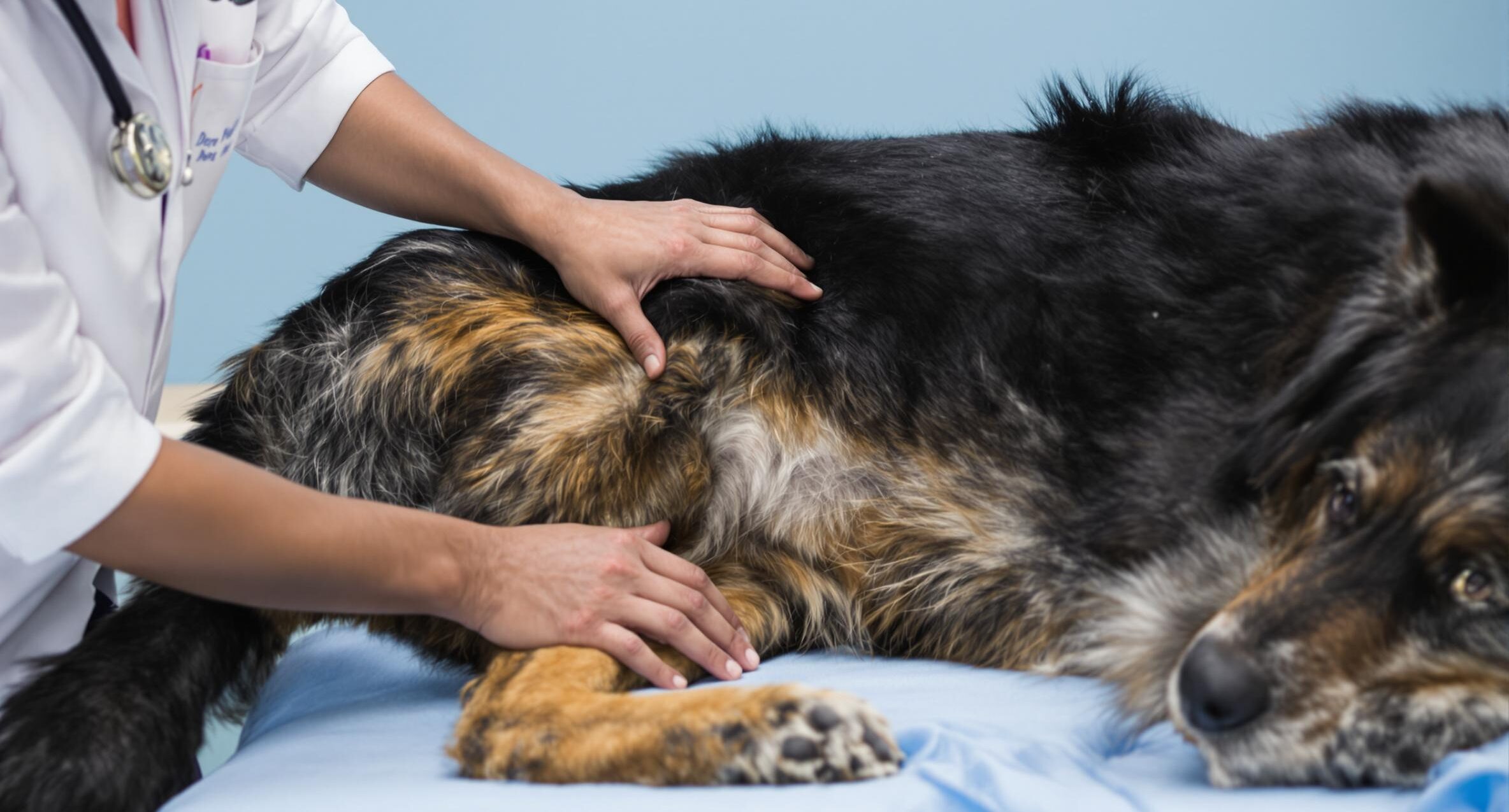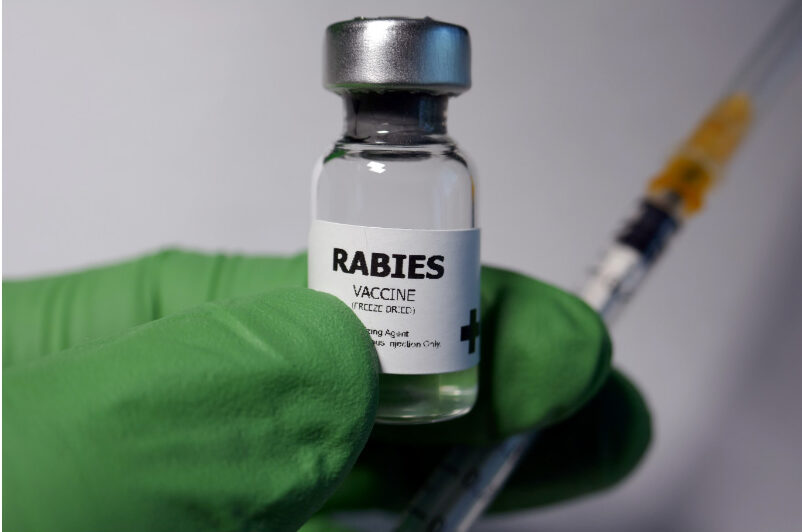Can I Give My Dog Benadryl for Itching?

Your dog’s itchy skin is a symptom of many different conditions and is not an official diagnosis.
When dogs itch, they scratch, bite at their skin and paws, lick themselves excessively, and even rub and roll on the carpet or grass to scratch that itch. And it always seems to be worse at night, hearing your beloved pup scratching away, keeping you awake, and neither of you get any rest.
Some pet owners wonder, “Can I give my dog Benadryl for itching?”
Though Benadryl is a very safe drug used commonly in dogs, you should still never give an over-the-counter medication without speaking to your veterinarian first. Depending on the diagnosis of what’s causing the underlying irritation, your veterinarian may have you give Benadryl to relieve the itching. Let’s talk about what Benadryl is, how it works, the recommended dose, risks and side effects, as well as other treatments to consider.
What Is Benadryl and How Does It Work for Dogs?
Benadryl (drug name diphenhydramine) is an antihistamine that works by blocking a certain natural substance, histamine, that a body makes during an allergic reaction. It works by blocking the receptors that receive histamines in the body. This relieves many of the symptoms associated with allergies, like itching, sneezing, and hives.
The body still produces histamines, but the receptor antagonist blocks the receptors from registering the histamines.
Veterinarians most commonly recommend that pet parents give their dogs Benadryl to prevent or treat mild allergic reactions and to reduce nausea and vomiting associated with motion sickness or vestibular disease. Benadryl is not approved by the FDA for use in animals, and there are no Benadryl formulations specifically for pets, so the human medication is used “off-label.”
Because itching is a generalized symptom of many different conditions, Benadryl may not help long term, as it does not treat the underlying cause. It can be used for immediate relief before you can get your dog to the veterinarian to determine why they are itchy.
While scratching might temporarily ease itching symptoms, it can also cause further irritation or infection. In these cases, Benadryl may not be effective for conditions such as infection or chronic skin disorders.
Can Benadryl Help with Dog Itching?
Benadryl is commonly recommended for dogs with mild-to-moderate allergies. Seasonal allergies, food allergies, environmental allergies, and allergic reactions to insect or snake bites can all respond to Benadryl.
In most cases it is used to treat itchiness caused by skin allergies. It may also help reduce symptoms including:
- Hives
- Swelling and inflammation
- Redness
- Runny nose and eyes
- Coughing
- Sneezing
- Mild allergic reactions
Before you reach for Benadryl, consult your veterinarian about your dog’s symptoms.
Some allergy symptoms may also be signs of more serious conditions. In some cases, Benadryl can worsen a dog’s condition. For example, red, irritated eyes may be due to allergies, but they can also be a sign of glaucoma or dry eye, which Benadryl will not help.
Your veterinarian can also tell you if Benadryl may interact with any medications your dog is taking.
If your dog has any of the following conditions, use Benadryl only after veterinary approval: glaucoma, heart disease, liver disease, some lung diseases, hypothyroidism, hypertension, pregnancy, or seizure disorders.
Benadryl should not be used for severe allergic reactions. Symptoms include:
- Swelling of the face, lips, or eyes
- Trouble breathing
- Excessive panting
- Severe hives
For these emergencies, head straight to your veterinarian.
Benadryl may not help with other skin conditions such as bacterial or fungal infections, flea bites or flea allergic dermatitis, atopic dermatitis, seborrheic dermatitis, or hot spots. These issues require additional veterinary treatments.
Benadryl Dosage for Dogs
Before giving any medication, consult your veterinarian regarding an approved dose, especially for small breed dogs, senior dogs, puppies, or dogs with medical conditions.
Use Benadryl that contains only diphenhydramine. Many formulations are combined with dangerous ingredients such as Tylenol, alcohol, or xylitol. Never use time-release capsules for dogs.
According to the Merck Veterinary Manual, the standard dose is 2–4 mg per kilogram of body weight, or 0.9–1.8 mg per pound, given two to three times a day. A simple calculation is 1 mg per pound.
Benadryl comes in several forms:
- Tablets and capsules (25 mg or 50 mg)
- Children’s chewables (12.5 mg)
- Children’s liquid Benadryl (2.5 mg/ml)
Avoid any product with alcohol, xylitol, or decongestants, such as Benadryl-D.
Potential Side Effects of Benadryl in Dogs
Most side effects occur within the first hour, so monitor your dog closely after giving the medication.
Common side effects include:
- Drowsiness
- Dry mouth
- Urinary retention
- Hypersalivation
- Increased heart rate
- Rapid breathing
Some dogs may become hyperactive instead.
Rarer side effects may include digestive changes or increased or decreased appetite.
Signs of overdose include:
- Hyperactivity
- Muscle tremors
- Fever
- Incoordination
- Lethargy
- Trouble breathing
- Increased heart rate
- Dilated pupils
- Constipation
- Seizures
If you suspect overdose, contact your veterinarian or local emergency hospital immediately.
Alternatives to Benadryl for Dog Itching
Benadryl has been used for many years, but newer treatments may be more effective.
Apoquel is a prescription medication that targets allergic itching by interrupting the itch signal in the skin.
Cytopoint is a prescription injection that treats allergic dermatitis and provides long-lasting relief for 4–8 weeks.
Steroids may be used short term but can have significant side effects.
Natural remedies may also help:
- Omega-3 supplements (fish oils)
- Colloidal oatmeal baths
- Coconut oil to moisturize and soothe
You can explore supplements and skin health products on the Dog Vitamins and Supplements page at 1800PetMeds.
When to See a Veterinarian
You may need to visit your veterinarian to determine the underlying cause of the itch.
Seek veterinary care if your dog has:
- Hair loss, lesions, or sores
- Open wounds
- Excessive licking or biting
- Signs of fleas
- Possible food allergies
For flea issues, your veterinarian may recommend prescription or over-the-counter treatments. You can explore options on the Dog Flea and Tick page.
If your dog is having a severe allergic reaction — including swelling, difficulty breathing, excessive panting, or severe hives — seek immediate veterinary care.
Benadryl may offer quick relief for mild allergies, but your veterinarian can determine the safest and most effective long-term plan.
If you choose to give Benadryl, always consult your veterinarian first and monitor for side effects.
For more solutions to support your dog’s health, explore categories like the Dog Flea and Tick page, Dog Skin and Coat Care, and Dog Allergy Relief.
Shop trusted products for your pet on the Dog Category at 1800PetMeds.






